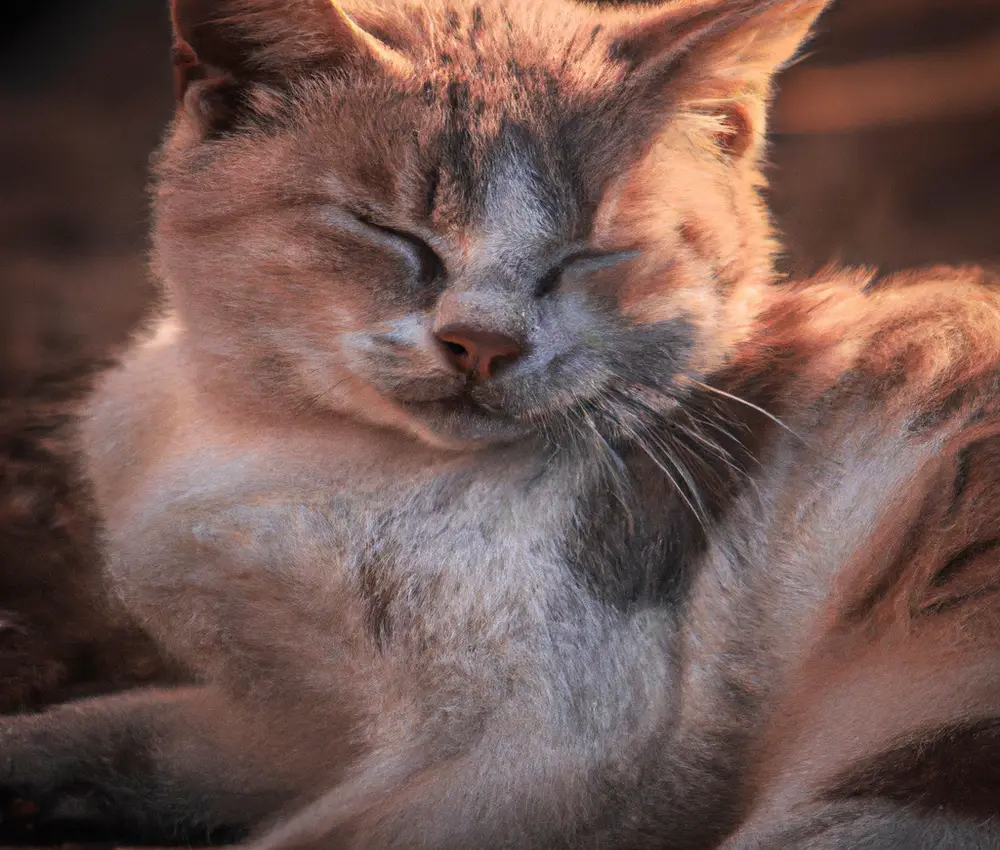What To Do With Fallen Cat Whiskers?
Key Takeaways:
- Collect fallen cat whiskers and store them in a safe place.
- Fallen cat whiskers can be used for crafts or as a natural play toy for your cat.
- Fallen cat whiskers can provide insights into your cat’s health and behavior.
- Paying attention to fallen cat whiskers can help you monitor any changes or abnormalities in your cat’s well-being.
Hey cat lovers! Have you ever come across a tiny, delicate whisker on the floor and wondered what to do with it?
Well, you’re in luck because today I’m going to guide you through the fascinating world of fallen cat whiskers and offer some creative and scientific ways to put them to good use.
From understanding the role of cat whiskers to handling them properly, we’ll cover it all.
Whether you’re a crafty individual looking for unique materials or a curious mind interested in contributing to scientific research, there’s something here for everyone.
So, let’s dive in and make the most of those fallen whiskers!
| Options | Explanation |
| Keep them as a good luck charm | Some people believe that keeping fallen cat whiskers brings good luck. |
| Make jewelry or crafts | Whiskers can be used in jewelry making or incorporated into crafts for decorative purposes. |
| Donate to science or researchers | Scientific research may benefit from studying cat whiskers and their properties. |
| Dispose in the trash | If none of the other options appeal, whiskers can be safely disposed of in the trash. |
What are cat whiskers and why do they fall out?
Cat whiskers are long, specialized hairs that serve multiple purposes. They can fall out and regenerate naturally as part of the shedding process.
Understanding the role of cat whiskers
Cat whiskers play a vital role in a cat’s sensory system. They are longer and thicker than regular hairs and are deeply rooted in the cat’s skin.
Whiskers are highly sensitive and help cats navigate their surroundings, detect changes in air currents, and judge distances.
They are also used for communication and expressing emotions. It is important to understand that cat whiskers should never be trimmed or pulled out, as they play a crucial role in a cat’s overall well-being.

The shedding process
The shedding process is a natural part of a cat’s life. It allows them to get rid of old and damaged whiskers and make space for new ones to grow.
Shedding typically occurs throughout the year but can be more pronounced during certain seasons.
It is important not to pull or trim cat whiskers as they are sensitive and essential for their sensory perception. Instead, simply let the whiskers fall out naturally and provide your cat with a stress-free environment to ensure a healthy shedding process.
What to do when you find a fallen cat whisker
If you find a fallen cat whisker, don’t worry! Store it in a safe place, as it can be a helpful tool for monitoring your cat’s health.
Recognizing a fallen cat whisker
Recognizing a fallen cat whisker is actually quite simple.
Here’s what you need to know:
- Look for a long, stiff hair: Cat whiskers are thicker and stiffer than regular fur. They are usually longer and can be found on your cat’s face, above the eyes, or on their cheeks.
- Pay attention to the shape: Whiskers are typically tapered at one end and have a small bulb-like structure at the base, which is where they attach to the cat’s skin. This unique shape helps cats sense their surroundings.
- Notice the color and texture: Whiskers are often a different color than regular fur and may feel coarser to the touch. They may appear darker or lighter, depending on your cat’s coat color.
Handling the whisker properly
Handling the whisker properly is essential to preserve its integrity. Here are a few steps you can follow:
- Gently pick up the fallen whisker using clean tweezers or your fingers. Be careful not to apply too much pressure to avoid damaging it.
- Place the whisker in a clean, dry container, such as a small envelope or a labeled plastic bag. Avoid using paper, as it can absorb moisture.
- Store the container in a cool, dry place away from direct sunlight. This helps to maintain the whisker’s condition and prevent it from becoming brittle or discolored.
- If you want to keep a record of the whisker, label the container with the date and any relevant information, such as the name of the cat it came from.
By handling the whisker properly, you can ensure that it remains in good condition for future reference or sentimental purposes.

Creative ideas for using fallen cat whiskers
Crafting with cat whiskers and DIY projects.
Crafting with cat whiskers
Crafting with cat whiskers can be a unique and creative way to add a personal touch to your DIY projects. Here are a few suggestions on how to incorporate cat whiskers into your crafts:
- Jewelry: Cat whiskers can be used to create one-of-a-kind earrings, necklaces, or bracelets. Simply clean the whiskers and glue them onto metal or resin settings for a stylish and unconventional accessory.
- Decorative touch: Add cat whiskers to your handmade cards, scrapbooks, or other paper crafts for a quirky and whimsical touch. Glue them onto the surface or use them to create intricate designs.
- Keychains or zipper pulls: Attach cleaned cat whiskers to keychains or zipper pulls for a unique and personalized touch. You can even add beads or charms to further enhance the design.
- Bookmarks: Create custom bookmarks by attaching cat whiskers to ribbons or colored strings. This can be a cute gift for fellow bookworms or a fun addition to your own reading collection.
- Fairy wands: Use cat whiskers as the magical element in DIY fairy wands. Combine them with ribbons, glitter, and a stick to create a whimsical toy or decorative piece.
Remember, when using cat whiskers for crafting, make sure to clean them thoroughly before incorporating them into your projects. Additionally, always handle them with care to ensure they remain intact and undamaged.

DIY projects
DIY projects are a fun way to get creative with your fallen cat whiskers.
Here are a few ideas for what you can do:
- Whisker Jewelry: Use small beads and jewelry findings to create unique earrings or pendants. Attach the whiskers using glue or wire for a one-of-a-kind accessory.
- Whisker Art: Frame a collection of whiskers in different shapes and sizes for a quirky and minimalist piece of wall art. Arrange them in a pattern or create a silhouette of your cat.
- Whisker Keychain: Make a personalized keychain by attaching a whisker to a keyring. You can add beads, charms, or even a small pendant to make it more decorative.
- Whisker Bookmark: Glue a whisker onto a piece of cardstock to create a unique bookmark. You can embellish it further with paper cutouts, stickers, or your cat’s name.
Remember to handle the whiskers with care and clean them before use.
Scientific uses of fallen cat whiskers
Scientists utilize fallen cat whiskers for research and analysis, contributing to various scientific studies.
Research and analysis
Research and analysis plays a vital role in understanding the potential uses of fallen cat whiskers.
Scientists conduct thorough investigations to uncover the unique characteristics and properties of whiskers.
Through careful study, they can determine the specific chemical makeup and structure of these whiskers.
Analysis techniques such as scanning electron microscopy and chemical analysis can provide valuable insights into their physical and chemical properties.
This research is crucial for identifying potential applications in fields like materials science, biotechnology, and biomimicry.
By examining fallen cat whiskers, scientists can unlock new possibilities for innovation and scientific advancements.
Contribution to scientific studies
Cat whiskers, though seemingly insignificant, have made valuable contributions to scientific studies. They have been used to study the anatomy and sensory functions in various animal species, including cats themselves.
Cat whiskers have provided insights into spatial orientation, prey detection, and even human tactile sensitivity.
Researchers have also developed advanced sensors inspired by cat whiskers, enhancing the field of robotics and prosthetics. Additionally, the study of whisker regrowth after injury has aided in understanding tissue regeneration.
These seemingly small structures have proven to be valuable tools in advancing scientific knowledge.
Frequently asked questions about fallen cat whiskers
Can fallen cat whiskers grow back?
Yes, fallen cat whiskers can grow back. Cat whiskers serve an important purpose, helping them navigate their surroundings and providing sensory information.
When a whisker is lost, a new one will eventually grow in its place.
It may take a few weeks or even months for a new whisker to fully grow back. During this time, it’s best not to trim or remove any remaining whiskers, as they are sensitive and essential for your cat’s well-being.
Is it safe for cats to lose their whiskers?
When cats lose their whiskers naturally, it is generally safe.
Whiskers fall out from time to time, just like hair.
However, it’s important not to trim or pull out a cat’s whiskers, as they play a crucial role in their sensory perception.
Whiskers help cats navigate their surroundings and determine the size and distance of objects.
Losing their whiskers can disorient and stress cats.
So, let them shed naturally, and avoid any unnecessary interference.
Final Verdict
Fallen cat whiskers are not only fascinating but also have practical and creative uses.
Understanding the role of cat whiskers and the shedding process can help us appreciate their significance.
When finding a fallen whisker, it is essential to handle it properly to preserve its integrity.
Creative individuals can explore crafting and DIY projects with whiskers, while scientists can utilize them for research and analysis.
Lastly, common concerns about whisker loss, such as whether they grow back, can be addressed to ensure the well-being of our feline friends.
The potential of fallen cat whiskers is vast, and with proper care and exploration, we can make the most of them.







